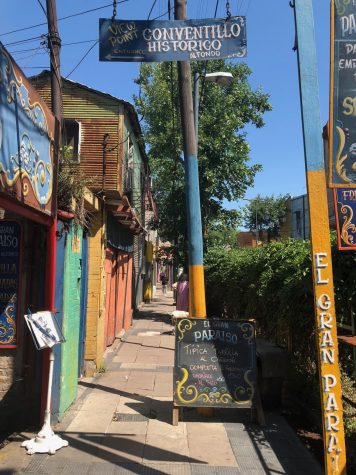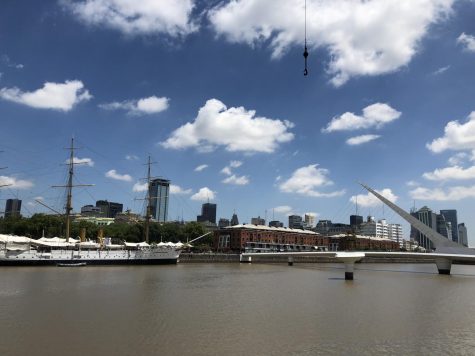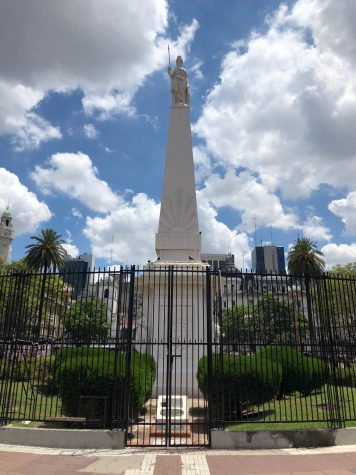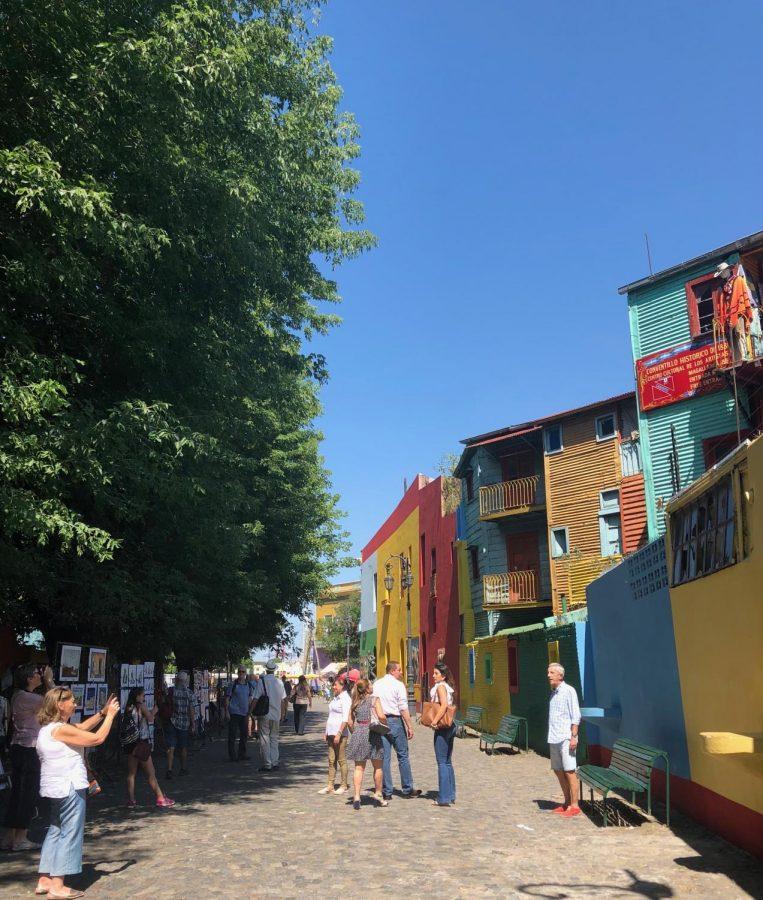Swapping New York For Buenos Aires
La Boca
October 2, 2018
After bearing through the 11-hour flight from John F. Kennedy International Airport, I landed in Ezeiza International Airport in the city of Buenos Aires. Unaccustomed to the Argentinian-Spanish accent that surrounded me at the luggage gate, I struggled to roll my three suitcases out of the airport. The 30-degree winter shocked my system as I had just left a blazing, humid summer in New York City. I was the typical traveler abroad in a new continent with a foreign language, so I felt vulnerable to say the least. My homestay was curious in design, decorated with vibrant pictures, ashen books and strikingly green plants. It all somehow made me feel at home as I began my junior year at NYU Buenos Aires.

La Boca, a neighborhood of Buenos Aires
Most people attribute Buenos Aires to being the Paris of South America with its French-inspired architecture, but Buenos Aires is very much one of a kind. Having been acclimated to the hustle of New York, I was caught off guard by how calm life is in Buenos Aires. The differences between the two cosmopolitan cities are recognizable, but they ultimately made me appreciate the uniqueness of both cities.
NYU Buenos Aires is infinitely smaller than the Washington Square campus. While everyone sooner or later finds their niche within 60,000 NYU students, there is something unique about attending a university abroad with a small group — this semester being roughly 50 students. This makes the horrors of studying abroad in a new continent seem less fearful because we have a support system.
Being so geographically detached from English-speaking countries, English is rarely an option here. Spanish is hard enough to learn on its own, not to mention that Argentine slang and pronunciations can be complicated to catch onto.

Puente de la Mujer, an iconic footbridge
In New York, the subway was my preferred method of transportation from Manhattan to Brooklyn — I relied on nearly all the train lines. Here, I swap the subway for the Subte, Buenos Aires’ metro line. A noticeable difference is that it costs nearly a fraction of the $2.75 New York City fare, and I haven’t encountered any rats. While taxis are also a main form of transportation in Buenos Aires, they are also a testament to one’s Spanish skills as the drivers rarely speak any English.
Much like New York City, Buenos Aires has a booming nightlife. I argue that it’s even more intense, since nights out here start after dinner, which usually doesn’t end until well after 10 p.m., and usually end at sunrise. The drinking age being 18 also makes going out a little easier, and the standard 160 peso drinks at the boliches, the Argentine clubs, come out to around four U.S. dollars, making a night out in Buenos Aires spectacularly more affordable than in New York.

Plaza de Mayo
If you’re considering studying abroad but still have hesitations, know that studying thousands of miles away from New York City has its challenges. But the study abroad sites offer unique, enriching and unforgettable experiences. If it’s economically and logistically viable, then make it a point to study at one of these wondrous places. You’ll never find something special if you keep searching the places you’re familiar with.
Email Olivia Garcia at [email protected].



























































































































































